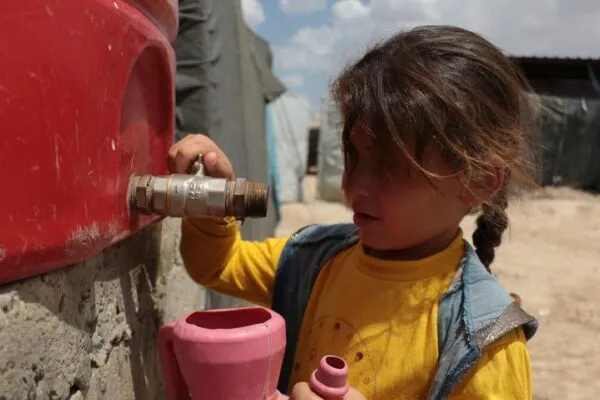Daunting Tale of Worsening Water Scarcity in the Indian Subcontinent
The whole world is facing an intensifying water crisis and India is no exception. With a huge population having limited water resources, fluctuating rainfall patterns, and rapidly depleting forest cover, it’s fitting to say that water scarcity is worsening in India.
The supply of clean drinking water has always been a scarcity in the country. Millions of people do not have access to clean and safe drinkable water and are living near polluted water sources for survival.
Thousands die every year after consuming contaminated water. Not only the quantity, but the quality of water has also deteriorated over time.
Table of Contents
Water Resources of India
India accounts for 18 percent of the world’s population and about 4 percent of the world’s water resources. The surface water (rivers, lakes, waterfalls, etc.) and groundwater resources in India play a major role in agriculture, hydropower generation, livestock production, industrial activities, forestry, and fishing.
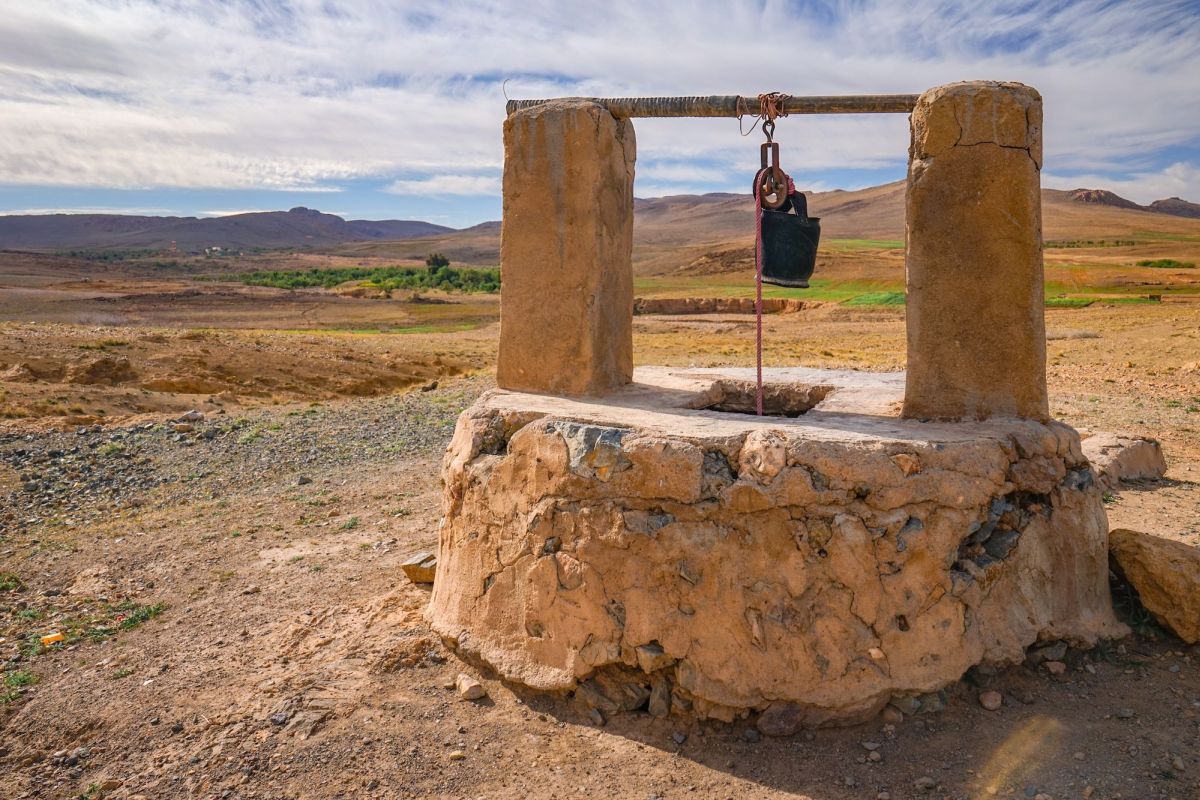
Image: Tatsiana Volskaya
There was a time in India when nothing was considered more pure and sacred than the rivers of the land. Rivers were worshipped and their water was holy. Rivers and groundwater were primary water resources back then.
Also Read: Water Crisis to Haunt India in Next Decade Owing to Growing Consumption
There are 12 major and 46 medium rivers in India that account for 5 percent of the water flowing through all the rivers of the world but carry 35 percent of water deposits.
But, as time passed, the growth of industrialisation and urbanisation burdened the rivers and other natural water sources resulting in the contamination of almost 70 percent of the country’s water.
According to a 2018 water quality assessment report by Central Pollution Control Board (CPCB), almost 351 river stretches, along with the 35 metropolitan cities and 615 urban centers, were polluted across India.
Untreated sewage and wastewater not only pollute the rivers but seeps through the surface and reaches into groundwater to contaminate it as well.
Also Read: Millions of Wells at Risk of Drying amid Global Groundwater Depletion
Current Grim Situation
India is facing a major and most serious water crisis in its history. Water problems are precarious in the population sector, but as a whole, the country has been facing a water crisis both for agriculture as well as for basic needs.
From the northern Himalayas to beaches in the south 600 million people (which is nearly half of India’s population) are facing an acute water shortage with 200,000 people dying each year from the polluted water.
According to international norms, countries with per-capita water availability of fewer than 1700 m³ per year are coined as water-stressed.
India obviously falls in this category with per-capita water availability of 1545 m³ per year, which is predicted to recede to 1401 m³ and 1191 m³ by 2025 and 2050 respectively.
After two consecutive years of weak monsoon, half of the country is affected by a severe draught-like situation. The situation is particularly bad in the western and southern states that received below-average rainfall.
The agricultural sector is one of the most affected by the worsening water scarcity in India as much of the sector relies on groundwater and rainfall. With shifting rainfall patterns and depleting groundwater levels, farming has taken a serious hit.
Rising global temperatures and rapidly changing climatic conditions have further exacerbated India’s this crisis.
Worsening Water Scarcity in India
Among various other factors contributing to worsening water scarcity in India unchecked population growth, incessant water pollution, and soil erosion top the list.
Not to forget, years of governmental neglect, wrong incentives, and outright misuse of the country’s water resources.
For a nation whose population nearly doubled in the past 40 years, the water demand has extremely increased simply burdening the water sources. Besides, non-stop urbanisation is also responsible for water scarcity in the major cities.
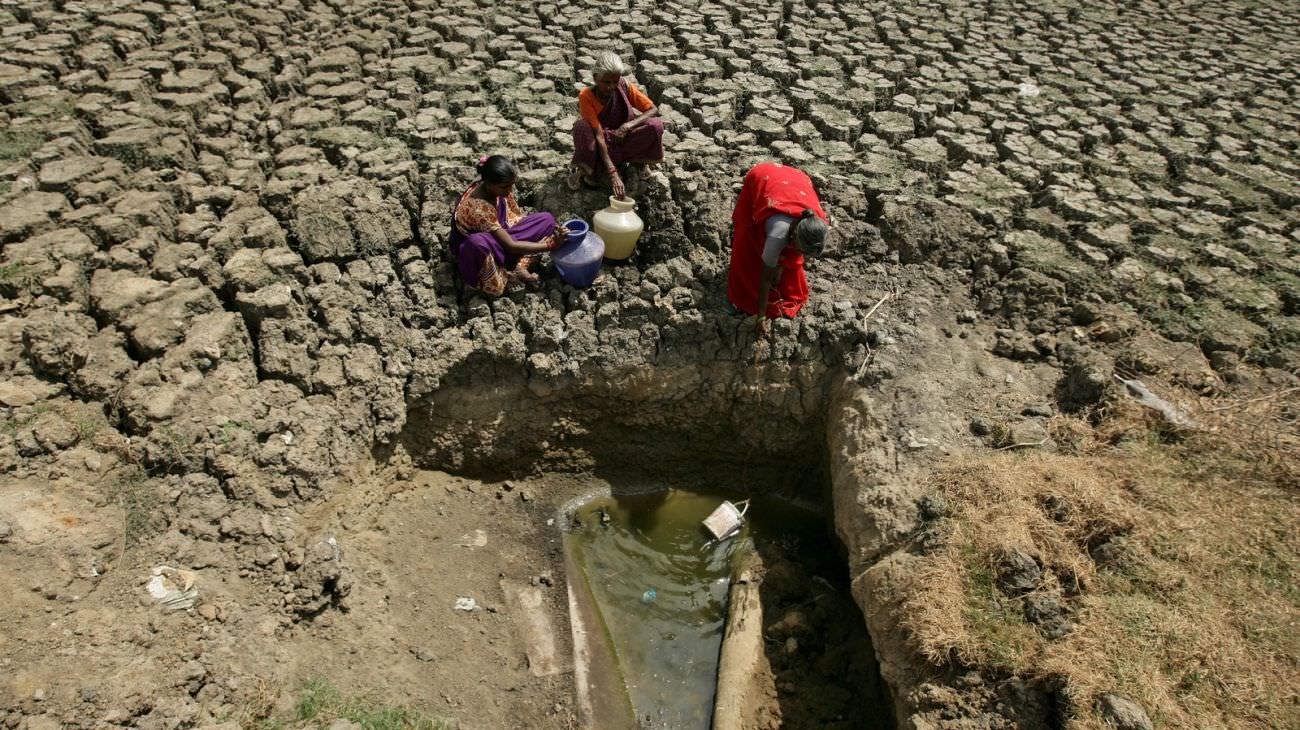
Image: Vice
Rivers and streams have borne the brunt of the recent urban explosion. In urban areas, the demand overwhelms the supply as there is a significant mismatch of the spatial distribution of available water with the population. Ironically, less water is available where more people live.
When the demand is not fulfilled, the over-exploitation of groundwater starts taking place. For farming, innumerable tube wells have been dug in the past few years and more and more water is pumped out.
15 to 25 percent withdrawal of groundwater is considered good, but Indians are drawing almost 80 percent of the groundwater, depleting it. Therefore, it is not surprising to learn that groundwater levels have declined drastically over the past few years.
Untreated sewage and effluent matter from factories are continuously fueling water pollution. Hundreds of river stretch that flow along the cities are critically polluted as the untreated wastewater and waste matter from the factories on river banks end up in them.
The monsoon rains shed around 3.6 to 4 trillion tons of water every year, which should be enough to recharge the groundwater. But, due to the deteriorating forest cover which leads to soil erosion, the water does not seep through the surface.
Repercussions of Water Crisis in India
The water stress in India is impacting hills and plains alike. Many sectors including agriculture, hydropower generation, livestock production, industrial activities etc. are getting adversely affected by the dry spell going on in the country. There are over 1500 water-stressed blocks in 256 districts of the country.
According to the Composite Water Management Index (CWMI) report by NITI Aayog in 2018, 21 major cities including Delhi, Chennai, Bengaluru, and Hyderabad are racing to reach zero groundwater levels by 2020 affecting access to 100 million people.
This report also reveals that the water demand in India is projected to be twice the available supply, implying worsening water scarcity for hundreds of millions of people and a loss in the country’s GDP.
However, 12 percent of India’s population is already living the ‘Day Zero’ scenario because of the excessive groundwater pumping, an inefficient and wasteful water management system and years of deficient rains.
Also Read: Over 30 Scary Pictures Depicting India’s Worsening Water-Crisis
The lack of water and polluted water affects agricultural lands resulting in the reduction of the fertility of soil thus harming the whole sector and country as well.
The Marathwada Region and Bundelkhand are the most water-scarce regions of India, where most of the population depends on farming for livelihood. The situation in these regions is so bad that many farmers have taken their lives in the past few years.
According to the Census 2011, out of 70 percent of Indian households, only 62 percent of urban households get treated tap water.
The consumption of untreated water by nearly half of the population tremendously adverse effects on the health of any and every life form living in the vicinity of the polluted water body.
In fact as far as India is concerned polluted water is one of the major factors behind the generally low levels of health in the country, especially in the rural areas.
Polluted water can lead to diseases such as cholera, tuberculosis, dysentery, jaundice, diarrhea, etc. In fact, around 80% of stomach ailments in India happen because of consuming polluted water.
Peek into the Grim Future
If the water crisis situation is not solved proactively, the future does not look very good or rather there might be no future. Water availability in India is going to be a more serious challenge due to various reasons.
The biggest concern is the rising population which is likely to increase to 1.66 billion by 2050. With the increasing population, the annual food requirement in the country will exceed 250 million tons by 2050.
Water demand is likely to increase significantly over the coming years. In addition to the agricultural sector, which is responsible for 70 percent of water abstractions nationwide, there could be a large increase in water demand for industry and energy production.
Accelerated urbanisation and the expansion of municipal water supply and sanitation systems also contribute to the rising localised demand.
According to a study, a 1.5 degree Celsius rise in global temperature will expose 356 million urban dwellers to extreme drought while a 2 degree Celsius rise will affect 696 million people.
Tackling Worsening Water Crisis in India
The severity of acute water shortage is evident through the fact that various regions of the country are struggling with water crisis and India is estimated to become a moderate water-scarce country by 2050.
According to some arguments, it is far in the future and India has plenty of time to fix the problem, the immediate actions are crucial.
Measures Adopted by the Government
The Central government has recently formed Jal Shakti Ministry in May 2019. It was a merger of two ministries; Ministry of Water Resources, River Development & Ganga Rejuvenation and Ministry of Drinking Water and Sanitation.
The ministry plans to provide piped water connections to every household in India by 2024. The Jal Jeevan Mission aims to provide access to clean and safe drinkable water to everyone in the country.
Also Read: Indian PM Launches Atal Jal Yojna to Tackle Water Shortage in Country
Jal Shakti Abhiyan (JSA), a campaign for water conservation and water security is yet another step taken by the government to tackle the worsening water scarcity in India.
The campaign is thriving to achieve five parameters such as water conservation and rainwater harvesting; renovation of traditional and other water bodies; reuse; bore well recharge structures; and watershed development and intensive afforestation.
To eliminate the situation of water pollution, the National Green Tribunal (NGT) directed 100 percent treatment of sewage entering the rivers across the country by March 31, 2020.
The NGT warned that if this is not done, the local bodies and concerned departments of the states and Union Territories (UTs) will be liable to pay compensation of Rs 5 lakh a month per drain in the case of river Ganga and Rs 5 lakh for default in commencement of setting up of sewage treatment plant.
Around 11,000 water ‘conservation interventions’ were successfully conducted in 300-gram panchayats across Maharashtra in 2019.
River Cleaning Campaigns
The need to clean rivers has been in the blueprint for several decades now. Millions of rupees have been pumped in for cleaning rivers under the Centre’s National River Conservation Plan (NRCP) and the “Namami Gange” programme under the Ministry of Water Resources, River Development & Ganga Rejuvenation.
In 1985, the Rajiv Gandhi Government launched the Ganga cleaning campaign as The Ganga Action Plan. Although the campaign has been on and off since, it was brought into prominence again with the 2014 elections, when Prime Minister Modi ascended to power.
Pooled in with the prodding efforts of social organisations, the Government’s Ganga Action Plan now launched the Clean Ganga Project, aiming to adopt measures to help clean up the National River of the country by 2018. As noted in an order of the NGT, around Rs 7,000 crores were spent only for cleaning the Ganga till March 2017.
Time and again, many other campaigns have been initiated to conserve and rejuvenate various major rivers such as Yamuna, Cauvery, etc. and some small rivers such as the Mithi River in Mumbai.
The government has also started Atal Bhujal Yojna that aims at groundwater management in 78 districts in seven states, including Bundelkhand in U.P. and M.P, from 2020 to 2025. The Rs 6,000 crore project is being funded by the World Bank.
Efforts on Individual Level
Rajendra Singh
Also known as “The Water Man of India”, Rajendra Singh has in past 20 years helped create 8,600 johads (mud dams to collect rainwater) and similar structures that provide water to over 1,000 villages in Rajasthan.
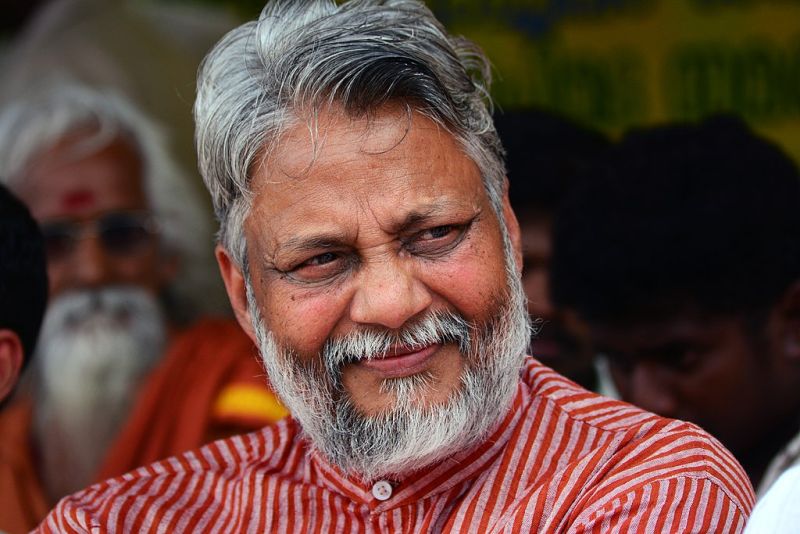
Image: Mullookkaaran
Shirish Apte
Shirish restored 21 Malguzari water tanks in the Bhandara district of Maharashtra that has recharged groundwater levels and increased agricultural output and fish production. He single-handedly rejuvenated the traditional water system in the state.
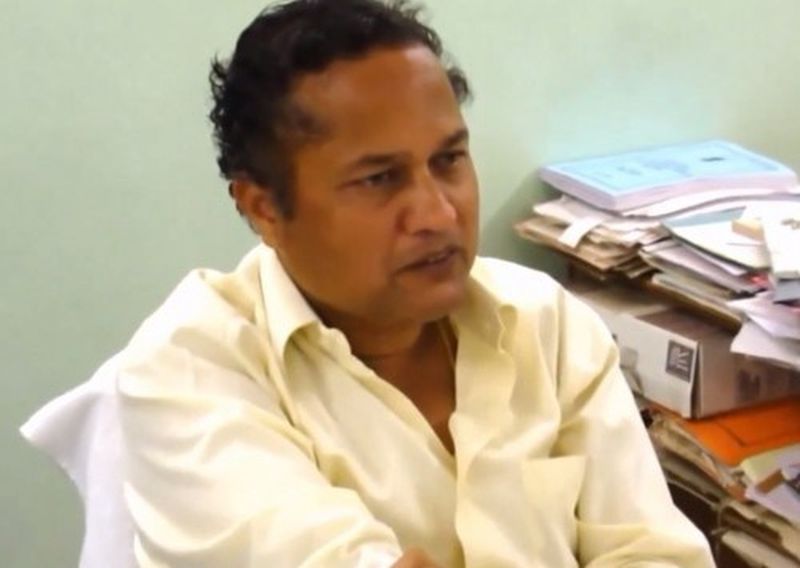
Image: Minaguli
Ayyappa Masagi
This Karnataka resident has developed thousands of conservation projects in 11 states and created over 600 lakes in the country. He is popularly referred to as Water Magician, Water Gandhi, and Water Doctor and believes that India’s water crisis can be eliminated.
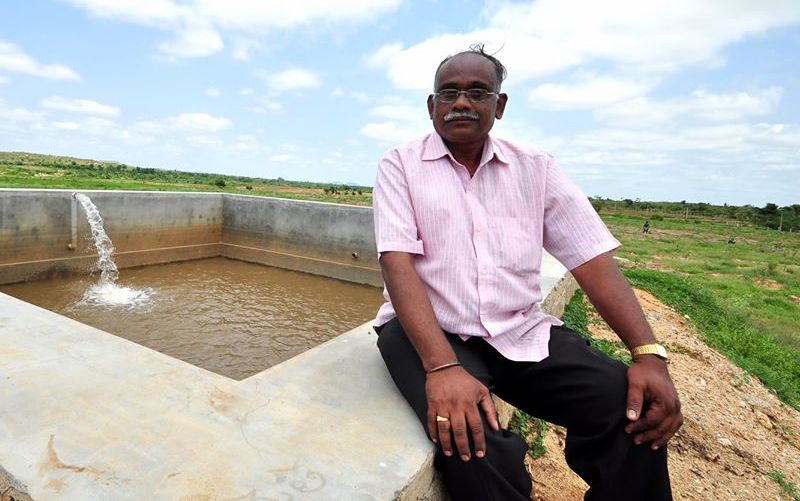
Image: Water Literacy Foundation
Aabid Surti
Aabid runs a one-man NGO named Drop Dead Foundation that has been helping save tonnes of water for over a decade now, by taking care of plumbing problems free of cost in Mumbai households.
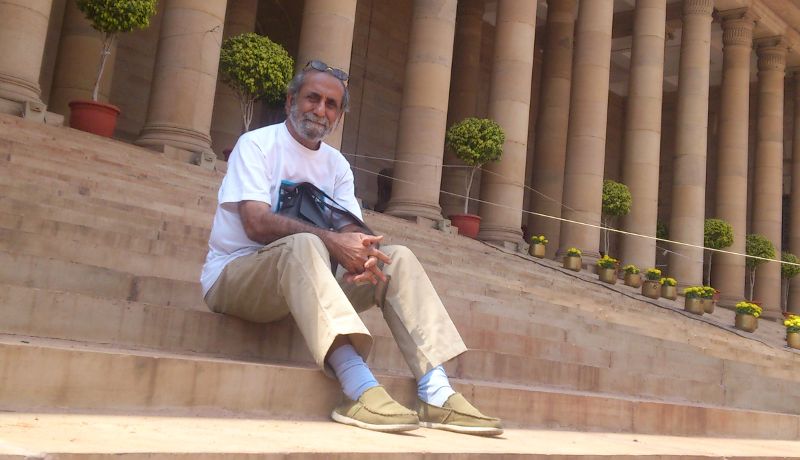
Image: Aabid Surti
Amla Ruia
A Mumbai-based social activist, Ruia has transformed many lives in over 100 villages in Rajasthan by using traditional water harvesting techniques and building check dams.
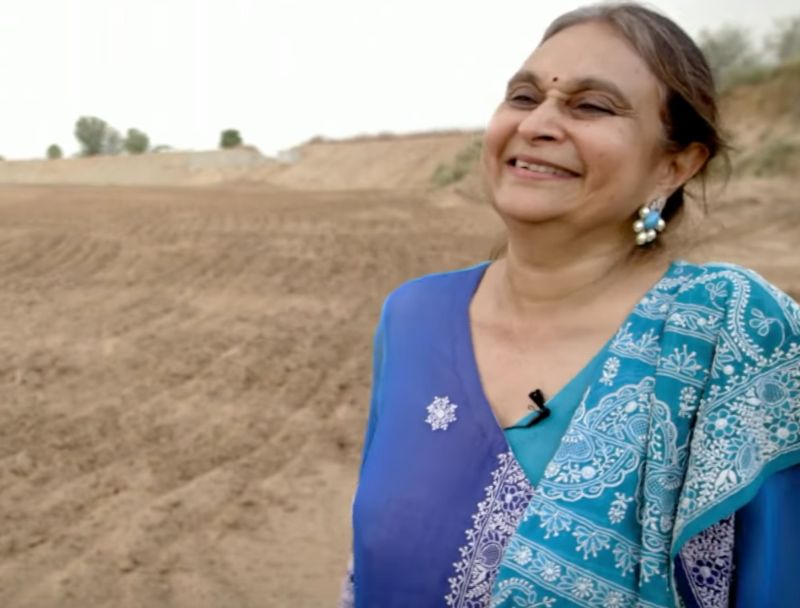
Image: BBC News
Taking Inspiration from our Ancestors
Talking about water conservation and merely starting campaigns is not enough to break the worsening water scarcity spell in India.
History has so much to offer in every aspect and water conservation is no exception. The waterwork systems built during Mughal Empire were very efficient.
Ruins from the Indus Valley Civilization had settlements with some of the ancient world’s most sophisticated sewage systems.
They included drainage channels, rainwater harvesting, and street ducts. Learning a thing or two from ancient water work systems might help to tackle the water shortage in India.
Intensive Afforestation Drives
Planting more trees is not good enough, taking care of those plants until they can sustain themselves on their own is also very important. Increasing the forest cover in the barren lands could help to revive the groundwater table.
Legal Battles for Water Conservation
The states are also getting financial assistance in the form of loans and grants that are sanctioned by foreign agencies. The concerned citizens and civil societies have moved the courts time and again to save rivers from pollution.
In March 2017, Uttarakhand declared Ganga and Yamuna as living entities thinking that this will conserve and rejuvenate the rivers faster. But in July, the Supreme Court stayed the order taking note of its legal and administrative ramifications.
In a November 21, 2016 order, Madras High Court stopped water supply to companies such as Coca-Cola and Pepsi for commercial purposes.
Vanashakti, a Mumbai-based environmental organisation, an NGO led by environmental activist Janak Daftary, prevailed in a case in the Supreme Court involving the restoration of the Mithi River in Mumbai in August 2019.
Conclusion
The subcontinent is running out of water and time to fix the worsening issue of water scarcity in India at the same time.
Planting trees intensively, cleaning the water bodies, 100 percent treatment of sewage entering the rivers across the country, taking steps on individual levels to conserve water are a few measures to start with.
Before it is too late, necessary steps are required to be taken so everyone, be it animal or human, must have access to clean and safe drinkable water.

